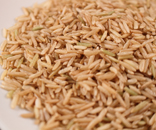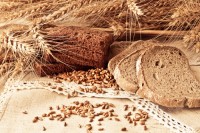Resistant Starches: How Eating Carbs Can Help you Slim Down
Don’t get me wrong, as a Naturopathic Doctor, I was taught that all carbohydrates should be avoided at all costs. However, new studies suggest that Resistant Starches are the New Power Fiber! Although this may be the first time you’ve heard of the phrase resistant starches, it is very likely to have been part of your diet for most of your life.
What is a Resistant Starch?

 A resistant starch is a type of dietary fiber naturally found in many carbohydrate-rich foods such as potatoes, grains, and corn, particularly when cooled. It’s name comes from it being able to “resists” digestion in the body. And, what makes resistant starch so special is the powerful impact it has on weight loss and overall health.
A resistant starch is a type of dietary fiber naturally found in many carbohydrate-rich foods such as potatoes, grains, and corn, particularly when cooled. It’s name comes from it being able to “resists” digestion in the body. And, what makes resistant starch so special is the powerful impact it has on weight loss and overall health.
In cooked starchy foods, resistant starch is created during cooling. Cooking triggers starch to absorb water and expand. As these portions of the starch become crystallized, the form it becomes then resists digestion. Cooling either at room temperature or in the refrigerator will raise resistant starch levels. Just remember don’t reheat!
 There Are 4 Different Types of Resistant Starch
There Are 4 Different Types of Resistant Starch
• Type 1: found in grains, seeds and legumes resists digestion because it is bound within the fibrous cell walls.
• Type 2: found in some starchy foods, including raw potatoes and green (unripe) bananas.
• Type 3: is formed when certain starchy foods, including potatoes and rice, are cooked and then cooled.
• Type 4: is man-made and formed via a chemical process.
 Benefits of Adding Resistant Starches into your Diet:
Benefits of Adding Resistant Starches into your Diet:
You will burn more calories faster. Unlike some types of fiber, resistant starches get digested when it reaches the large intestine. This process creates beneficial fatty acids, including one called butyrate, which may block the body’s ability to burn carbohydrates. One study found that replacing just 5.4% of total carbohydrate intake with resistant starch created a 20 to 30% increase in fat burning after a meal.
It shuts down hunger hormones. Animal studies have found that resistant starches prompt the body to pump out more satiety-inducing hormones. A meal with resistant starches trigger a hormonal response to shut off hunger, so you eat less.
It can prevent cancer. Research shows that the butyrate created by resistant starch may protect the lining of the colon, making it less vulnerable to the DNA damage that triggers diseases, such as colon cancer.
It may fight diabetes and heart disease. Like other fibers, resistant starch helps control blood sugar levels. Blood sugar control translates into more energy and sustained energy. It also means long-term heart protection, because chronic high levels of blood sugar and insulin cause delicate arteries to become clogged and harden.
It boosts your immune system Resistant starches may boost the growth of probiotics; the same kind of healthy bacteria found in yogurt that keep bad bacteria in check.
How Much Resistant Starches should you add To your Diet:
Adding just 1/2 to 1 cup of cooled resistant starch-rich food per day can do the trick. But remember to Keep it cool and Do not Reheat!
 RESISTANT STARCH RECIPES:
RESISTANT STARCH RECIPES:
TRY: White or Sweet Potatoes
RESISTANT STARCH: 1/2 cup
Serve cold potato salad as a side dish
Add chilled, chunked red potatoes to a salad
TRY: Brown Rice
RESISTANT STARCH: 1/2 cup
Mix chilled brown rice with almond milk, raw almonds, dried cranberries, and cinnamon in place of cold cereal for breakfast
TRY: Corn
RESISTANT STARCH: 1/2 cup
Add to a taco salad
Sprinkle into salsa
Dr. Saira, ND is a Naturopathic Doctor and the Senior Director of Operations and Naturopathic Medicine at Advanta Total Health. She is Double Board Certified as a Traditional Naturopath and in Nutritional Wellness from ANCB and has been in practice for several successful years. www.drsairand.com
































Leave a Reply
You must be logged in to post a comment.